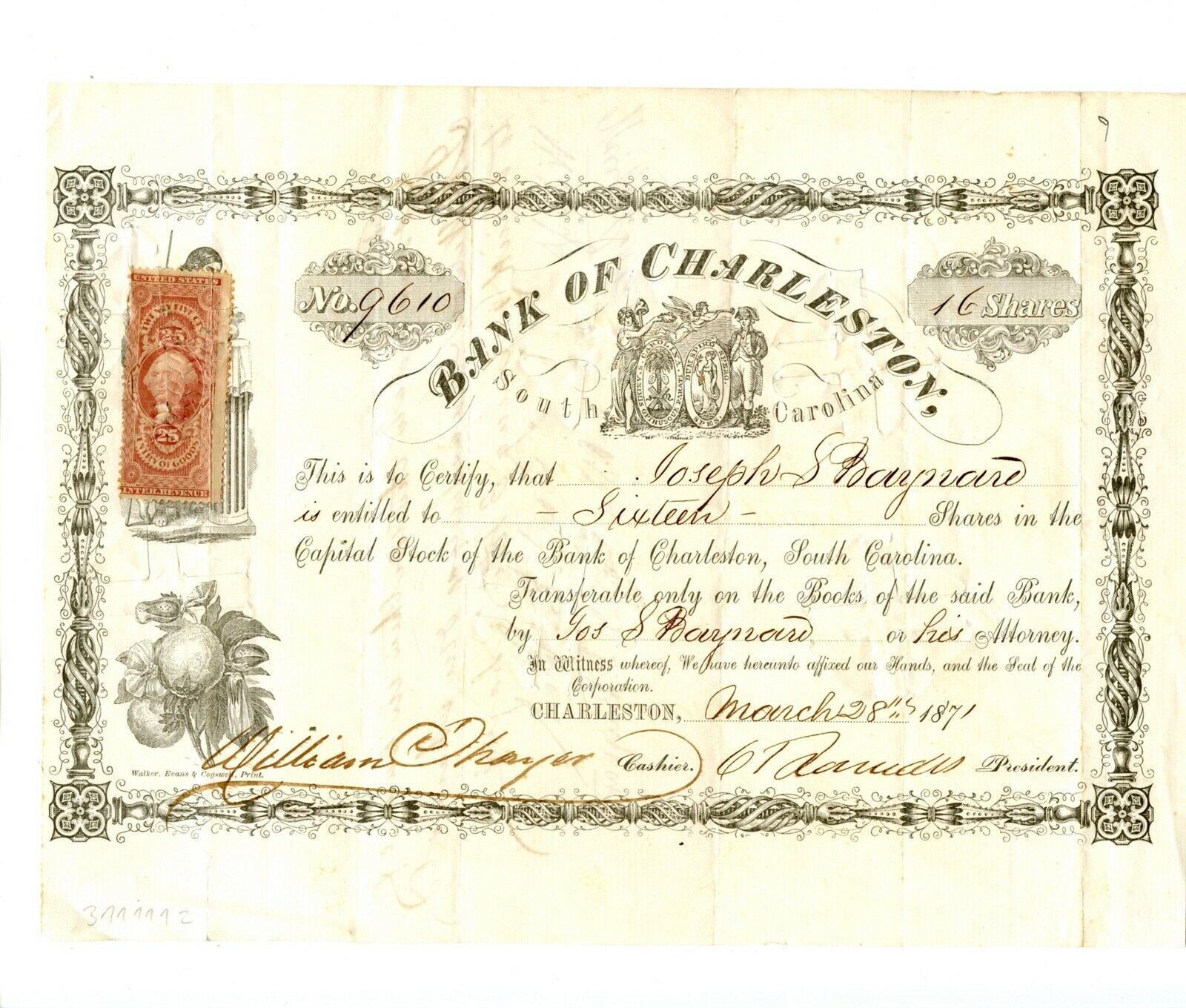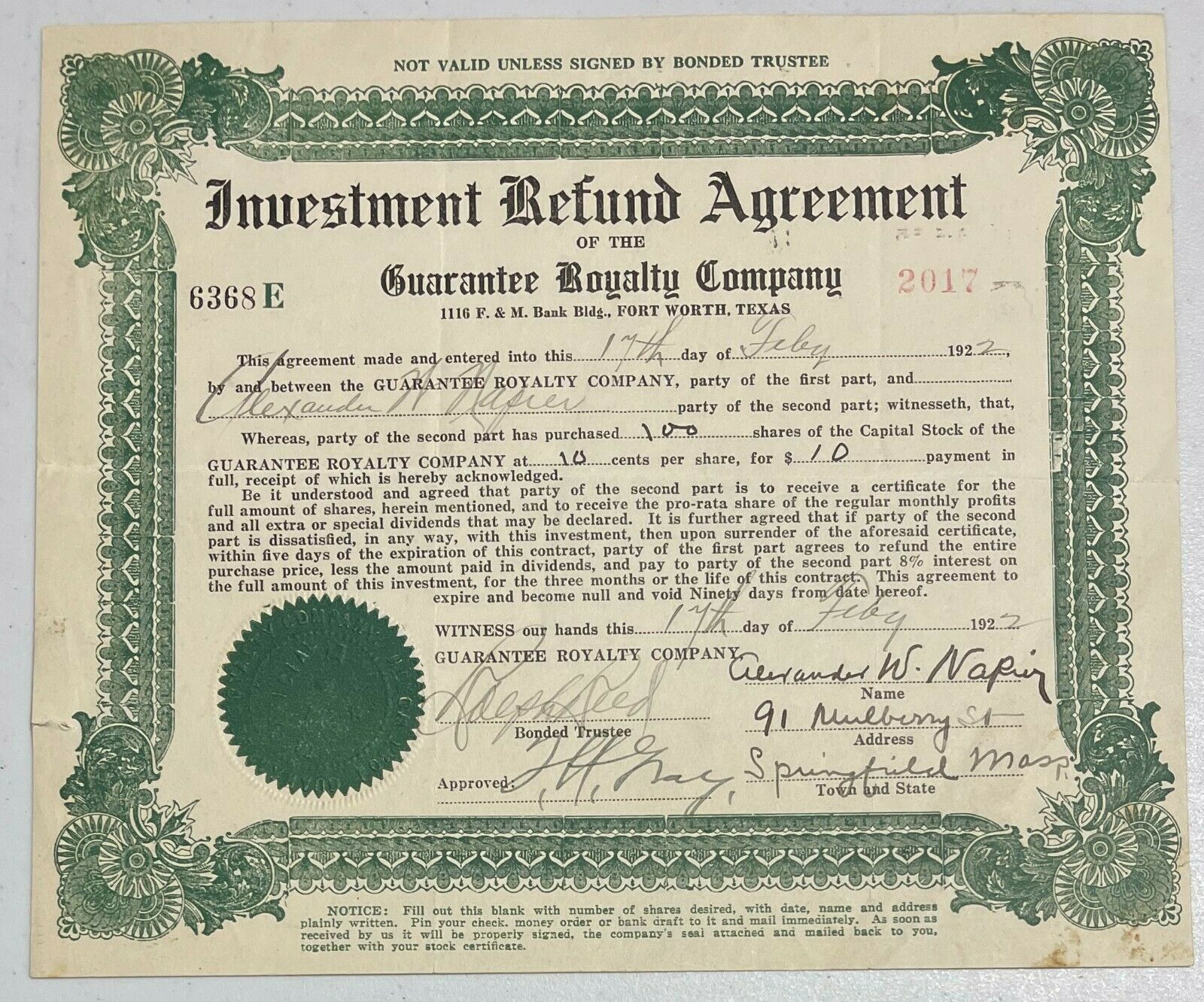-40%
1871. Charleston, South Carolina. Bank of Charleston Stock Certificate
$ 6.85
- Description
- Size Guide
Description
1855. Very fine condition. Punch cancelled.The Bank of Charleston traces its beginnings to 1818 as the Office of Discount and Deposit, South Carolina’s branch of the Second Bank of the United States (BUS). After President Andrew Jackson refused to renew the BUS charter in 1834, South Carolina businessmen moved to create a financial institution able to supply the resources necessary to ensure the state’s continued trade with European markets. On December 17, 1834, a group of Charleston investors under the guidance of Henry Gourdin secured a charter for the Bank of Charleston from the General Assembly. The formal organization of the bank took place in November 1835 with James Hamilton, Jr., installed as president. The new bank used the same workforce and building that served the old Office of Discount and Deposit.
As the largest private bank in antebellum South Carolina, the Bank of Charleston soon became regional in interest, opening agencies in the coastal cities of Apalachicola, Florida; Mobile, Alabama; and New Orleans. By 1860 the bank was one of the strongest financial institutions in the Southeast, with a reputation that carried across the Atlantic to the commercial centers of Western Europe.
When South Carolina seceded from the Union in 1860, the Bank of Charleston lent 0,000 to the state to support the new government. It would subsequently lend a total of .5 million to the Confederate government. The money was never repaid. The bank’s assets of million dwindled during the war, leaving the institution insolvent by the time of the Confederacy’s collapse in 1865. Despite this setback, the Bank of Charleston was the only bank in South Carolina to resume business after the Civil War, thanks to timely loans from England arranged by bank president Charles T. Lowndes. The bank reopened its doors in 1870.









